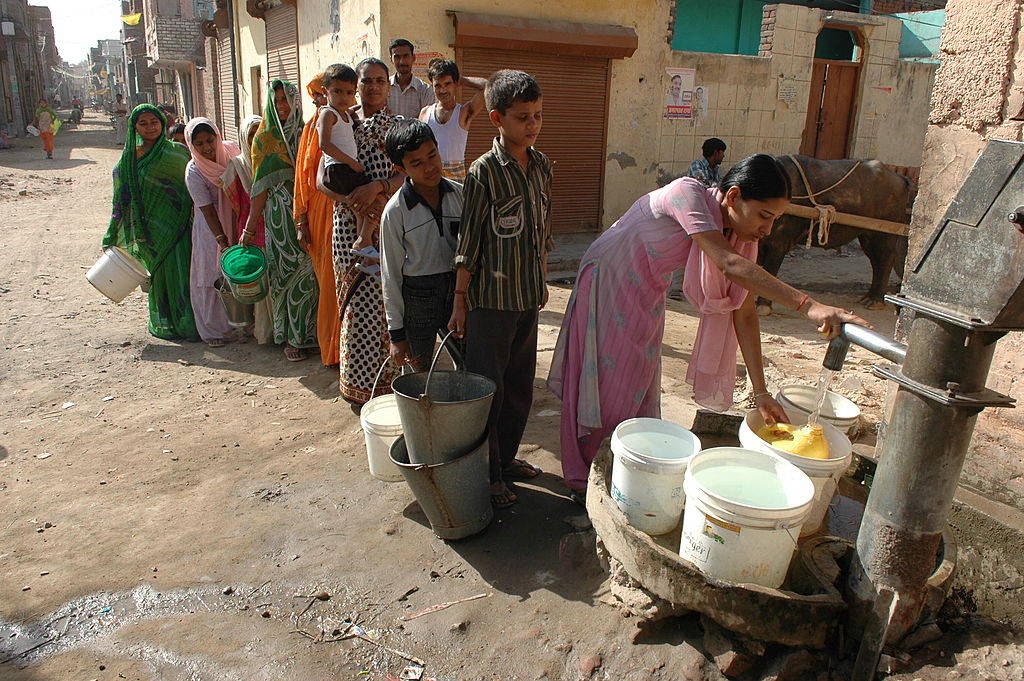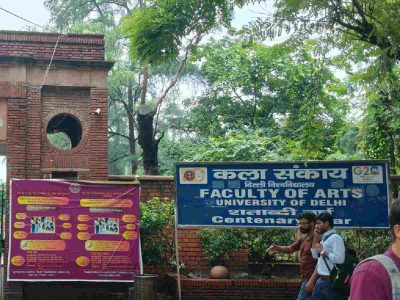Scarcity of potable water is the price being paid for rapid urbanisation and industrial development in Delhi’s satellite city
In the last couple of decades, Ghaziabad has witnessed rapid development. The housing boom coupled with the development of industries and job creation ensured that the city grew under the shadow of the National Capital. But the rapid growth has come at a cost and it is now reeling under a serious water crisis.
Environmentalists claim that the water crisis in Ghaziabad is due to excessive extraction of groundwater for construction activities and industrial purposes.
Local environmentalist Sushil Raghav alleges that NOCs (no-objection certificates) have been given by the Central Ground Water Authority to various industries which are extracting groundwater in notified areas, without clarity as to why this was done. As per the guidelines of CGWA, industries are not allowed to extract ground water in notified areas where the water table is down. Extraction only for drinking purposes is allowed here when municipal water is not supplied.
According to a 2017 report of Ghaziabad’s CGWA, the city (municipal area), Loni, Bhojpur, Razapur are “over-exploited”, while Muradnagar is semi-critical in terms of water level.
Raghav alleges that NOCs were obtained by some of these industries by submitting incorrect information about their location. “CGWA has given them NOCs without site inspection. Industries including Bisleri, Dabur India Ltd, are situated in Ghaziabad municipal area, which is a notified area.” he says.
“One of the interesting cases is that of Dabur, which mentioned block Muradnagar, in the address for NOC which is incorrect.” These industries are located in the Municipal Corporation area. Dabur was allowed to extract 450 cubic meters of water per day. Muradnagar is a “semi-critical” area. So NOC given for two years from May 2016 to May 2018 should have been reviewed as per guidelines.
Last year, NGT (National Green Tribunal ) said that no extraction will be allowed by industries for commercial purposes in areas developed by Uttar Pradesh State Industrial Corporation (UPSIC) in Ghaziabad. It also said that without NOCs given by CGWA, as per its current guidelines, no extraction of groundwater is allowed. Before this order, NGT also said that CGWA cannot allow industries to extract groundwater on payment.
Nevertheless, as per CGWA guidelines, NOCs can be given when groundwater is saline. “Proposals pertaining to such cases must have a detailed project report elucidating the mechanism of handling the effluent water and its various uses,” says the CGWA report. But CGWA has not clarified in any report as to at what level the water becomes saline in Ghaziabad. However, the PH level of Ghaziabad’s water ranges from 7.6 in the city to 8 in Muradnagar, Razapur and Bhadaura.
“Now NOCs of these industries have expired but some of them are still using groundwater. And there are as many as 42 such big industries. Will the CGWA allow them to use groundwater by only imposing fines? How much fine will they charge? What will it achieve?” asks Raghav.
In January, NGT summoned the CEO of CGWA over water extraction by builders and obtaining NOCs without proper compliance in Noida and Ghaziabad. A bench headed by Justice Adarsh Kumar Goel then said, “We find that though there are several deficiencies in compliance of conditions imposed by the CGWB while granting NOCs for groundwater extraction, the CGWA has failed to take necessary action even after the deficiencies have come to their notice.”
“Since such is the situation in a number of cases, it is necessary to require the presence of the CEO of the CGWA to ensure that there is an effective monitoring mechanism to remedy such violations without which the regulatory functions entrusted to the CGWA will have no meaning,” it said.
Most importantly, data on the rate of groundwater depletion in Ghaziabad is scarce. In 2016, activist Akash Vashistha got a response in the RTI from CGW board, in which they told that groundwater depletion from 2006 to 2015 has been between 0.7 metres to 3.26 metres in Bhojpur, Muradnagar, Rajapur and Loni blocks of Ghaziabad. This means that the situation is critical.
Water is a state subject and Uttar Pradesh government recently passed its own Ground Water Act 2020, to regulate groundwater use and improve the falling aquifers. “Since we have our own law now, I am informed that NOCs given by CGW board are being transferred to the District Groundwater Committee and will be considered by them,” said Akash Vashistha, member of legal penal constituted by Ghaziabad’s District Magistrate for the implementation of this law.
Another major challenge the city is facing is that of water contamination. Groundwater at various locations is not potable. Residents from Raj Nagar, Khoda area allege that the groundwater is contaminated with Hexavalent Chromium, which is categorised as a carcinogenic. Various reports claim that in many blocks of Ghaziabad, groundwater is contaminated with arsenic and fluoride and is not safe for drinking.
Pankaj Yadav, resident of Khoda area in Ghaziabad says, “If you store groundwater for a day, you find that it turns yellowish. Groundwater is not drinkable here.” Ghaziabad is also home to a lot of poor localities, who can’t afford to purchase drinking water or install filters.
However, in some residential areas, Ganga water is supplied, channelled through a 185-km Upper Ganga canal from Haridwar to Dasna in Ghaziabad. From there it is brought to Pratap Vihar Ganga Jal plant where water gets processed and supplies 360 million litres in parts of Ghaziabad and Noida. In Ghaziabad, this water goes to the residents of Vasundhara, Vaishali, Kaushambi, Indirapuram and Delta colonies.
(As of now we have not received any responses from the CGWA and will update the story when they respond)





